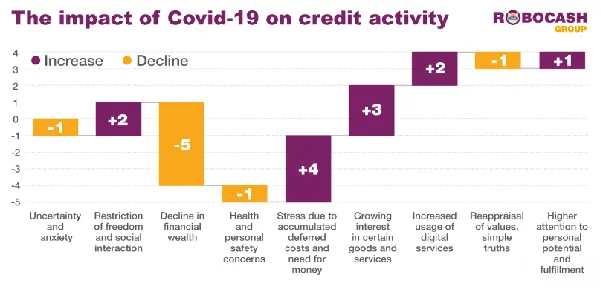
Non-bank lending to flourish in Asia as incomes diminish
More than two-thirds have prepared for active borrowing.
Non-bank lending is likely to skyrocket in Asia, with 50% of loan customers expressing a need for higher financing, a study by instant small loans firm Robocash revealed.
Almost half or 45% of respondents indicated the decrease in incomes as their main reason to seek active borrowing once restrictions are lifted. Meanwhile, 9% of respondents are motivated by the desire to satisfy their hunger for consumption.
To assess the psychological impact of the pandemic on the future credit activity of borrowers, Robocash identified nine main factors evaluating their positive and negative influence on a 5-point scale. Results of online customer surveys in the Philippines, Indonesia, Vietnam and India were also taken into account.
Decline in financial wealth was the main factor, which slashed the demand for all types of loans during the active phase of the quarantine, when 28% faced a real drop in income. Other factors such as overall insecurity and anxiety, established habits to keep social distance and cut down on expenses were also cited.
Combined with tightened scoring requirements, it will also prevent a sharp surge in lending after the removal of restrictions, Robocash said.
Although a far more complex set of factors will affect the outcome such as government policies, the state of alternative lending, the adaptation of traditional banks will allow for predicting an increase in volumes for non-bank lending after the complete removal of restrictions, the report concluded.




![Lorem Ipsum [ABF 1]](https://cmg-qa.s3.ap-southeast-1.amazonaws.com/s3fs-public/styles/exclusive_featured_article/public/2025-03/a_hand_pointing_to_a_futuristic_technology_5b87c9d0e3_1.png.webp?itok=2w0y1WhS)


![Cross Domain [Manu + SBR + ABF + ABR + FMCG + HBR + ]](https://cmg-qa.s3.ap-southeast-1.amazonaws.com/s3fs-public/styles/exclusive_featured_article/public/2025-01/earth-3537401_1920_4.jpg.webp?itok=WaRpTJwE)







 Advertise
Advertise

